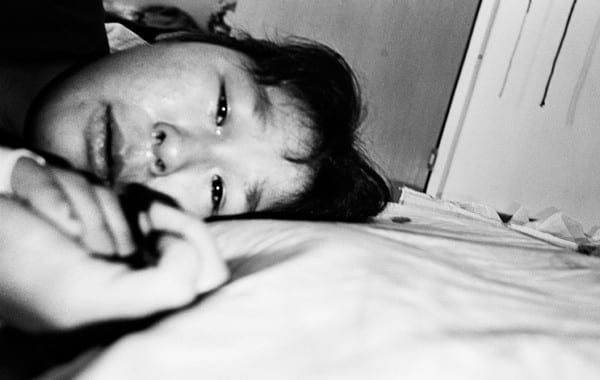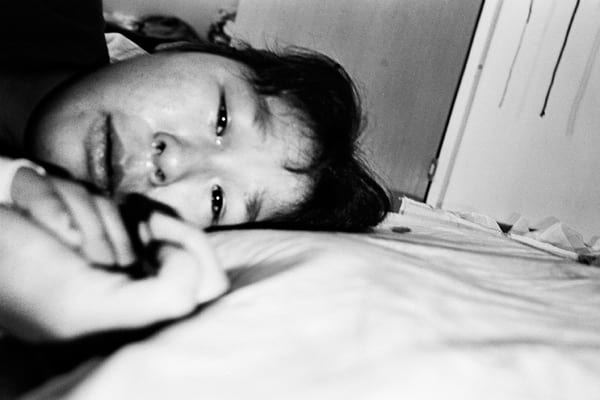
(Arctic Incursion – About Greenland in the viewfinder and the ability of documentary photography to renew itself, especially in light of Jacob Aue Sobol’s Sabine – Brought to you by ASX and Jacob Aue Sobol)
By Finn Thrane
Traveling in Greenland can be a humbling experience. At least, that is the impression from reading the introduction to Knud Rasmussen’s story about the first Thule expedition in 1912. “A lot of the traveling man’s joys and experiences, which he finds worth writing down, may appear naive and insignificant to the more sophisticated townsman; but it has not been my intention to cover over this by simulating a superiority I did not possess; I am of the opinion that unconditional abandonment is the result of readiness in the face of the moment.”
These words include the claim that the immense country, with its coldness, wide-open spaces and tough population, does not need an exaggerated dramatic staging in order to reach its audience. Greenland is best communicated in a low voice – it is large enough in itself. It has not always been like this, far from it. In the 250 years Greenland was a Danish colony, the remote and icecap-covered island was enveloped in a mystery fed by what people didn’t know. The first accounts originated from adventurers and scientists who had defied climate and primitive expedition life and now wanted to harvest recognition for their efforts and the accolades that followed. The scientific records often were designed to mark the differences between the backward culture they had visited, under such stressful conditions, and their own as representative of the colonial power. Their elevation to hero status and the expanded proportion of myths were confirmed when they corroborated their findings with the basic material of verification— photographs. These photographs showed not only the participants of the expeditions and their ice-covered ship, but also portraits of the ‘strange people’ (the natives), sitting in their dirt- or icecaves in the middle of the wilderness; the women often scantily clad with bare breasts.
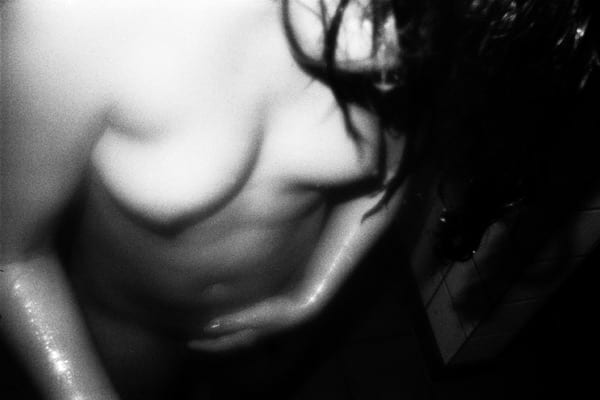
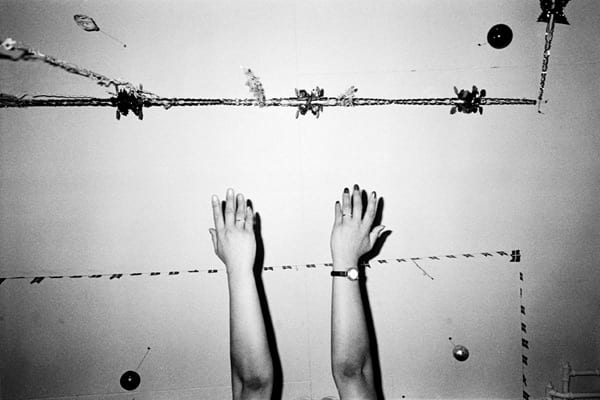
Already from the 1850s photographers traveled the west coast, while Thule and the east coast didn’t receive camera-equipped archeologists, geologists and ethnographers until half a century later. Also here film and glass plates were used to reaffirm the [cultural] distance: “The photographs’ clinical mode of depiction testify to the preoccupation of that time with a so-called material culture and physical anthropology. Consequently, several of the people are presented in profile and frontally, while others are placed in front of skin tents or by sleds, thereby reducing them to museum displays…”.
The young Danish photographer Jacob Aue Sobol brought neither social prejudices nor social criticism with him when he first traveled to eastern Greenland. He was only on a job, making a documentary series from Tinitequilaaq, a godforsaken place whose name, through translation, implies the end of the world: The sound that runs dry at low tide. After five weeks Sobol had had enough. He got his black and white shots and went back to Denmark—but could soon see that his portrait of the settlement might be distorted. Four months later he returned to Greenland and resumed photographing. On this second trip he sees that the little community incorporated many more layers and meanings than he could see the first time. This time, Greenland captures him. The hilly landscape lay transparent and glowing and the frozen seawater lures. He makes friends among the hunters, who take it upon themselves to train him. He becomes a hunter and a fisherman and can, despite the arctic cold, provide his own food. As this new life suddenly pans out for him the pampered motherland to the south shrinks into a pale past, and he decides to test himself in meeting the basic existential challenges of eastern Greenland. But behind this decision lay the real motivation: falling in love with the Greenlandic girl, Sabine. This circumstance not only changes his arctic project, but also fundamentally affects the language he uses to tell his story. The violent inner revolution melts together with dramatic nature and sends out its boiling hot prominences to meet the absorbing darkness and the icy piteraqs —projections we have seen before when “unhappy love rains from above”.
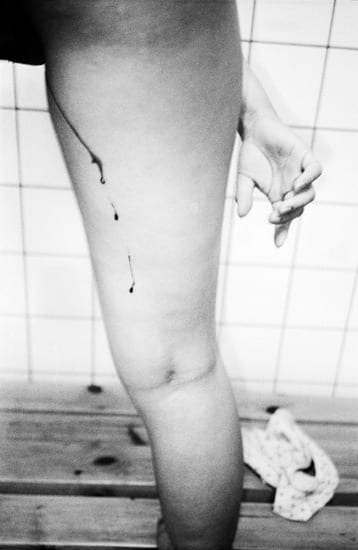
In the 1960s and ’70s it was the films—the Danish documentary and especially the multitalented Jørgen Roos—that helped the Danes understand Greenland’s development. But not until the mid 1990s did a photographic initiative, Per Folkver’s and Frank Hvilsom’s Of the Inner Strength (1994), dare show, from the Greenlandic perspective and way of thinking, the basically gloomy testimony, namely the story about one of the highest rates of suicide in the world. Here, we meet “a universally valid story about longing and disappointment, loneliness and alienation, devil-may-care despair and euphoric joy etched into the consciousness as an expression of the lurking desperation to which the teenage suicides testify”.
Sympathy and understanding is undeniably on the side of the Greenlanders. Similarly, Finn Larsen created a documentary series in color of homeland narratives describing the modern Greenland and its changing culture, suspended between communities of hunters and the modern dependence on consumption. The most important renewal of the portrait of the great arctic island comes from Greenland itself, by the academy trained Pia Arke, who had her breakthrough with a number of culture-critical photographic projects in the 1990s. Arke was born and raised in eastern Greenland the daughter of a Greenlandic mother and Danish father. She made literal her homesickness for the great island by building a pinhole camera so big that she could live in it, and had it placed on the hillside so it could capture forever, with its long exposures, the view of the inlet and the drift ice. The view reminded her of her childhood home in the settlement, which now—in the name of development —had been demolished and erased. In several later series with found images, Pia Arke sharpened her sword against cultural imperialism, when she put together a mosaic of older anthropological Eskimo pin ups with bearskin clad heroes, flaunting ethnic and sexual condescendence and stirring debate.
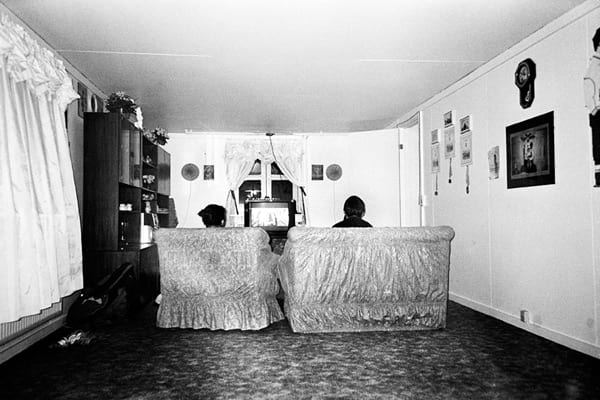
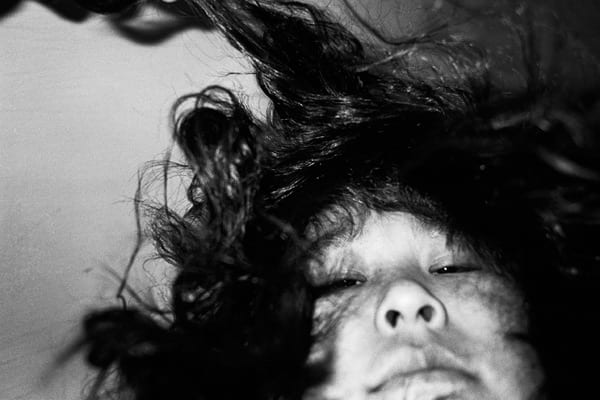
Work on Greenlandic identity must, for good reasons, first and foremost be a Greenlandic responsibility. But the desire for clarification eventually envelops a visitor like Jacob Aue Sobol. Initially, his contact with the small population of the settlement is through hunting and fishing, and later through love for Sabine. Only afterwards the camera begins working, but so radically that the documentary photograph gains new stature. The series in its rawness is likened to the work of such international names as the Swedish Anders Petersen and the British Richard Billingham. The book’s cover plays out the love theme: With a little finger-formed heart window the main character sends her signal to the photographer. With arms raised in the same position he fires back his rectangular response—the picture, which frames and retains it all. The game is set in motion. The text parts communicate glimpses of the selfimposed education—as budding breadwinner at the seal net, as a fisher at the ice hole or as the ‘husband’ in the bathtub—or dives deeper into the process of recognition in notes about the clash of cultures, chapters about the piteraq or stories about boundary crashing experiences at death’s door.
The visual part is less fragmentary. It is structurally chained together through a sequence of ‘outside pictures’, engulfing a series of ‘inside pictures’, which often have Sabine as subject and focus. Condensed glimpses—like the flayed seal on the bathroom floor—combine nature and the fight for survival with a steaming eroticism. The lashing ice storms, alternating with the arctic darkness around the house, imply an unpredictability reflected in the many expressions of Sabine: passionate, roguish, childlike, selfless, demonic, tender, willful, jealous, cool, grief-stricken.
Like the unpredictable changes in temperature, outside as well as inside, the camera strikes suddenly at moments when the outcome cannot be anticipated. We stand, sit or lie with the photographer pondering a chaos or a mysterious sequence of lines. Central to the series two pictures stand out: the first, an interior semi-close up with eye contact to a group of glad, lightly dressed Greenlanders, presenting classic pre-colonial openness—were it not for the little glowing girl in the middle, closing off with arms crossed, a confrontational look in her smileless face. The other an exterior in bird’s-eye perspective, with a large part of the settlement’s population viewed as a community, gathered for a funeral. Both send a message about the necessary solidarity, demanded of and depended on by life in the settlement.
This also leaves a crack open for an opposing view, namely of the one registering, the man with the camera eye, the outsider, the Dane. What eventually becomes clear is that good will isn’t enough. Yes, not even love can suffice as bridgebuilder, when the gulf is as deep as it gets between two cultures, which are collapsing themselves, in crisis.
Sabine’s small passionate love window from the cover of the book gets caught and is reflected in Jacob’s photographic rectangle. Here the self-destructive and tragic anchor point of the story is formed: that the ups and downs of love are co-writing the story and – probably – end simultaneously at the last page. Is it the artist, the sensitive one, who gives life form and purpose in his work, or is it the woman, life and destiny, who carves the man and makes him an artist? Or is it just the inevitable: The sound that runs dry at low tide.
Finn Thrane
Sabine.
Photographs by Jacob Aue Sobol.
Politiken, 2004. Cat# ZD710 ISBN-10: 8756771576
ASX CHANNEL: Jacob Aue Sobol
All images © copyright the photographer and/or publisher
